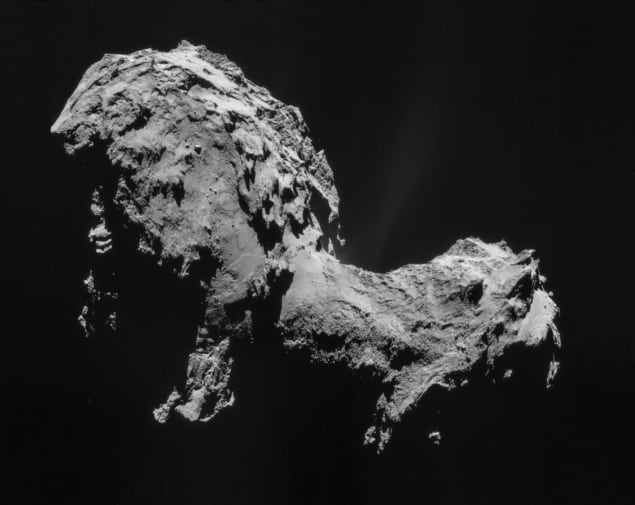
Some key molecular building blocks of life could have been created far earlier on in the formation of the solar system than previously thought. Experiments and simulations done by Sergio Ioppolo at Queen Mary University of London and an international team have revealed how simple amino acids may have emerged via reactions on the surfaces of cold interstellar dust grains, long before the Sun first formed. The discovery could transform our understanding of how life-forming compounds first arrived on the primordial Earth.
Ice contained within comets is thought to be some of the oldest and most pristine material in the solar system. By determining its composition, scientists can glimpse conditions present when comets first formed, alongside the Sun and the planets.
In 2014, the ESA’s Rosetta probe arrived at the comet 67P/Churyumov-Gerasimenko and measured the chemical makeup of comet ice for the first time. Rosetta found evidence for the amino acid glycine and its precursor methylamine in 67P’s coma of sublimated ice. Both molecules are key building blocks of life on Earth.
Ancient molecules
Further investigation suggested that the molecules had become embedded in the pristine water ice coating the surfaces of dust particles ejected from 67P, and had never been substantially altered by heat or liquid water at any point in the comet’s history.
At the time, modelling suggested that glycine and methylamine could have been created in the ice by exposure to radiation including cosmic rays and ultraviolet photons. Now, however, Ioppolo’s team argue that this radiation would damage complex molecules after producing them.
In their study, the researchers looked at whether the molecules could have been made by “non-energetic” reactions that occurred within the dense, dark dust clouds that are characteristic of early star formation. Through lab-based experiments, they recreated these conditions using bare dust grains coated in a water-rich ice layer, which they released inside an ultra-high vacuum chamber.
Intermediate radicals
Even in such low-energy conditions, the chemistry observed by the team was surprisingly rich. Within the ice a wealth of non-energetic reactions involving atoms and free radicals was observed. This produced species including methane, ammonia, and carbon dioxide; as well as the intermediate radicals required to produce glycine and methylamine.

Ingredients for life spotted on comet 67P/Churyumov–Gerasimenko
The team then investigated these processes further using astrochemical models. This involved using laboratory data as a basis to extrapolate the chemical reactions which would likely take place in the next million years. They calculated that glycine likely becomes abundant during the latter few 100,000s of years of evolution, as interstellar gas densities increase substantially.
Once formed, the glycine could then become a precursor to more complex amino acids, as functional groups are added to its backbone. Eventually, ice-coated dust grains would coalesce into planetesimals like comets – which can deliver complex biological molecules to newly forming planets.
The research is described in Nature Astronomy.



